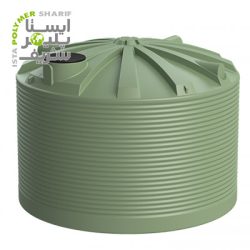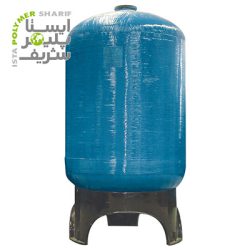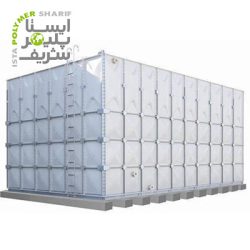Given the wide variety of water tanks available, GRP tanks offer multiple options for effective selection, including drinking water tanks and firefighting tanks. Three critical parameters include the water tank’s capacity, the space it occupies, and the timeframe allocated by the client for tank construction. Polyethylene tanks, if sufficient space is available, are among the most economical and readily available practical tanks.
The useful life of this GRP tank is approximately 15 years. In the country, more than 100 companies are producing these prefabricated tanks. Polyethylene tanks have temperature limitations, operating at temperatures above 50 degrees Celsius, and face significant repair challenges in case of any failure.
Construction of GRP Tank
With the introduction of composites or glass fiber-reinforced resins (GRP) into the realm of transport tanks, storage, and process tanks, extensive applications have been defined for them. Today, GRP tanks are widely used across various industries for storing various fluids. Generally, composite tanks or GRP tanks can be used for the storage or process of acids, alkalis, saline water, organic compounds, and petroleum derivatives.
GRP tanks have extensive limitations, especially at temperatures above 120 degrees Celsius. GRP or FRP tanks are produced using various processes. The most efficient method for producing GRP tanks is manual laminating. These tanks can be manufactured according to designs and in various forms. Another method for producing GRP tanks involves filament winding around a mold. Fibers soaked in resin are wound around a complex metallic mold. Depending on the operating pressure of the tanks, fibers are wound to achieve the desired thickness.
Prefabricated GRP Tanks
GRP or FRP tanks fall under the category of prefabricated tanks, capable of production up to dimensions or diameters of up to 4 meters in the country. Larger volumes are practically immovable. In recent years, the emergence of two companies capable of producing prefabricated GRP tanks or SMC tanks (modular tanks or panel tanks) has made on-site construction of these GRP tanks feasible up to volumes of 1000 cubic meters.
These tanks are sectional, with panels sized at 1 meter by 1 meter and 1 meter by 2 meters, installed on frames and foundations. The main advantage of SMC tanks is their short installation time, which significantly outpaces concrete tanks in terms of civil engineering considerations. However, high prices, limited environmental resistance, low earthquake resistance, and crack growth are major weaknesses of GRP tanks or modular tanks.
Concrete tanks are among the most cost-effective options, typically constructed for tanks with volumes exceeding 20 cubic meters. With advancements in concrete science and various additives, concrete tanks are gradually regaining lost market share. Their primary weakness lies in waterproofing, suitability for potable water contact, bacterial growth, and long-term execution time. In terms of price, GRP tanks rank among the best tanks available. Total is not serious about entering LNG Iran.
GRP Tank Pricing
GRP tank pricing wholesale is influenced by design, operating temperature, fluid type, volume, tank type, and operating pressure. Generally, GRP or FRP tanks are used for the storage or transport of water/saline water, corrosive fluids, and petroleum derivatives. After performing limited element analysis and assessing the volume of consumables and production processes, GRP tank pricing is determined.
GRP tanks vary in price depending on the production method. GRP tanks produced using filament winding have the highest prices compared to GRP tanks produced using other methods (hot molding or manual laminating). GRP tanks produced using hot molding (SMC tanks) are predominantly used for drinking water storage.
SMC tanks or modular tanks are prefabricated and installed on-site for specific project dimensions. Integrated GRP tanks produced using filament winding or filament winding are primarily used for the storage of pressurized fluids, known as composite pressure tanks. A combination of filament winding and manual laminating methods is used for constructing tanks capable of holding approximately 60 cubic meters.
In general, due to the impracticality of transporting tanks with volumes exceeding 200 cubic meters, these tanks are primarily constructed on-site. The price of GRP tanks or FRP drinking water tanks is approximately one to one and a half million Tomans per cubic meter. GRP tanks or GRVE tanks, primarily used for corrosive fluids, cost around three million Tomans per cubic meter. For tanks with high corrosivity or operating temperatures, thermoplastic liners must be used.





